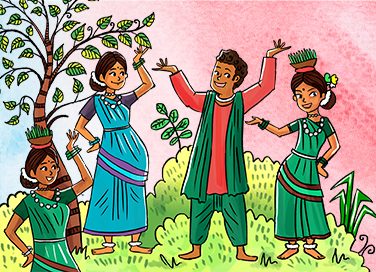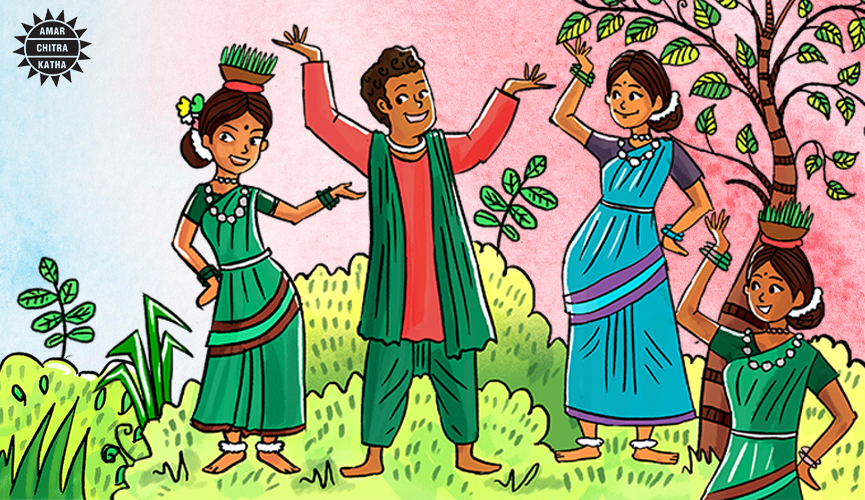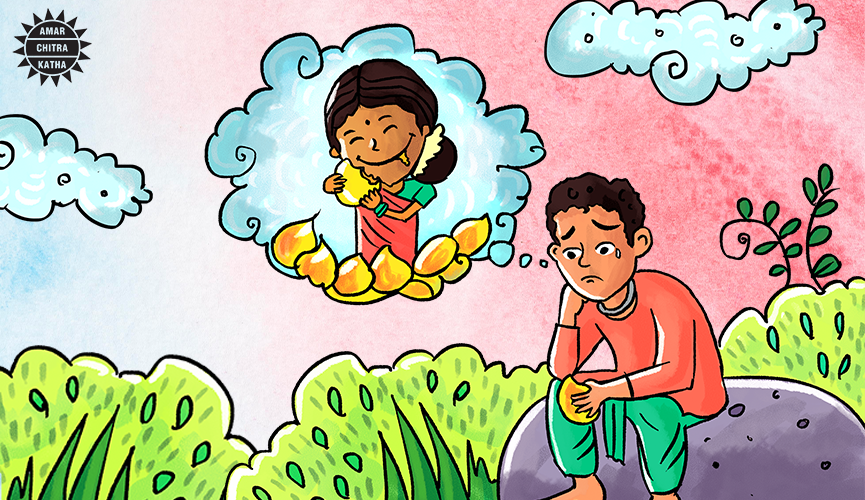Dadaria: An Art Form of the Baiga Tribe
- March 6, 2023


Dadaria: An Art Form of the Baiga Tribe
- March 6, 2023
By Komal Narwani
A Dravidian tribe, the ethnic Baiga group, is specifically found in the central states of India such as Madhya Pradesh, Chhattisgarh, Jharkhand and Uttar Pradesh. Minimalistic living and a deep bond with nature are the most prominent characteristics of this tribe. Their intimate connection with forests makes them skilled healers. Baiga originates from the word Vaidya, meaning the healer.

The Baiga tribe has a fascinating art form called Dadaria. The art is a delightful blend of dance, poetry and emotions. People of the tribe use the art form to express their thoughts and feelings. They have written and continue to create short lyrical poems, which could be classified as quatrains or couplets. They sing it and also perform a dance accompanying it. These dance poems depict their feelings and their lifestyle. Interestingly, the Dadaria dance, unlike other Baiga folk dances, is designed on the Dadaria song. All the other folk songs of the Baigas are created to match the folk dances.
To receive more such stories in your Inbox & WhatsApp, Please share your Email and Mobile number.
The Dadaria song is sung to express love for a beloved, complain about work and life, narrate or summarise a fable, or even invoke the forest gods. The Baigas do not need a special occasion to practice the Dadaria. They perform it while doing their daily chores such as collecting firewood, grazing animals or gathering forest produce. However, the Dadaria dance and song are a crucial part of various special occasions and celebrations.
Here are some examples of the Dadaria poems, translated to English:
‘A lamp burns if its wick is oiled. Heart of a youth craves,
even if he is asleep!’

‘As you said that you wanted mangoes, I got the sweetest
and largest of them all.
You said that you would come and eat these, I waited,
days and nights, but you never came!’
Read more about the tribal communities of India in Amar Chitra Katha’s title The Legend of Lohasura, available in the nearest bookstore or on the ACK Comics app!
To receive more such stories in your Inbox & WhatsApp, Please share your Email and Mobile number.

Comic of The Month
The Naval Journey of India Book I
This book is the first of a three-book series that takes a deep and detailed look at India's Naval History and a deep insight into the lives of our men and women in white. But any series on the Indian Navy has to start at the very beginning - exploring India's celebrated maritime history. Join our little hero, Bharat, and his grandfather, Commodore Sagar, as they sail into the deep blue waters of time. Book I of The Naval Journey of India takes a sweeping look at India's maritime endeavours, how the seas impacted us over millennia and how the oceans made us who we are.